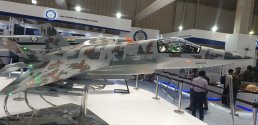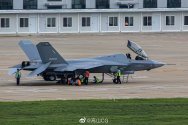And so it begins, the looong acquisition process
You are using an out of date browser. It may not display this or other websites correctly.
You should upgrade or use an alternative browser.
You should upgrade or use an alternative browser.
Indian Military News, Reports, Data, etc.
- Thread starter bd popeye
- Start date
Rafale is a small plane with low range that is completely not suitable for India's geography. They should be getting improved flankers or F-15EX instead. But just like all of Indian acquisitions, this is also terrible.And so it begins, the looong acquisition process
India only has to cover two fronts so a medium fighter is a good match for what they need. Yes, a heavy fighter would be better, but the IAF was complaining about the maintenance that their flankers entail so there's a preference there for mediums. Realistically, the Rafale is very well suited for the IAF. The main problem is that India is paying way too much for them so it's impossible to acquire the 100+ 4.5 gen medium fighters they need.Rafale is a small plane with low range that is completely not suitable for India's geography. They should be getting improved flankers or F-15EX instead. But just like all of Indian acquisitions, this is also terrible.
Also, India is planning 84 of their Su-30MKIs to 4.5 gen capability so that requirement is theoretically covered. Of course, it's India so who knows if any of these plans come to fruition, and when any of this will happen. I'm personally not optimistic about any of their chances.
How does the strategic partnership between two turkeys will make an eagle (Scout's promiss).
Last edited:
Pravin Sawhney on FM Asim Munir threat and its implications for India.
From Show floor model to CAD model! And proper one at that too it seems, all the internal bits modeled out.Hey ... finally at least a bit of a news!
but sorry, I couldn't resist ... it looks almost like a copy of the J-35!
Including the forward-hinging canopy the Chinese allegedly stole from the F-35!
View attachment 157913
progress.
How big is this supposed to be? Since it has 2 engines its gonna be J35/F22 size-ish right?

There is a longer video but its mostly in Hindi.
They are saying it will be stealth, not visible to radar, this was 100% designed locally in india with no foriegn help, various institutes collabed for the design, the cockpit design is final as show in the video, pilots inputs were taken into consideration.
Internal weapon bays can carry 1.5 tons worth of weapons?? And in non-stealth node (external points) can carry additional 5 Tons.
At 3:10 journo asks "If the plane can dodge enemy missiles"
And director asks "Dodge means??" (he genuinely looked like he didnt know the meaning)
He talks more about features from 3:32 onwards in english
Also is that a BIG IR prob infront of the canopy? I guess those Electric Optical thingies will come later
(he says the technologies required to developed this aircraft has been developed day 1)
And it will have Electronic Pilot (that will handle the missing 2nd pilots work?) I am guessing some smart/ai thingy
Time to finish 1st prototype at 2027
Pravin Sawhney on FM Asim Munir threat and its implications for India.
Just realized that bro had to close his comments section to preemptively screen out abusive messages from you know who…
FriedRiceNSpice
Major
But the AMCA is far superior... the J-35 is confined to the physical world, whereas the AMCA operates in the digital/virtual worlds!Hey ... finally at least a bit of a news!
but sorry, I couldn't resist ... it looks almost like a copy of the J-35!
Including the forward-hinging canopy the Chinese allegedly stole from the F-35!

